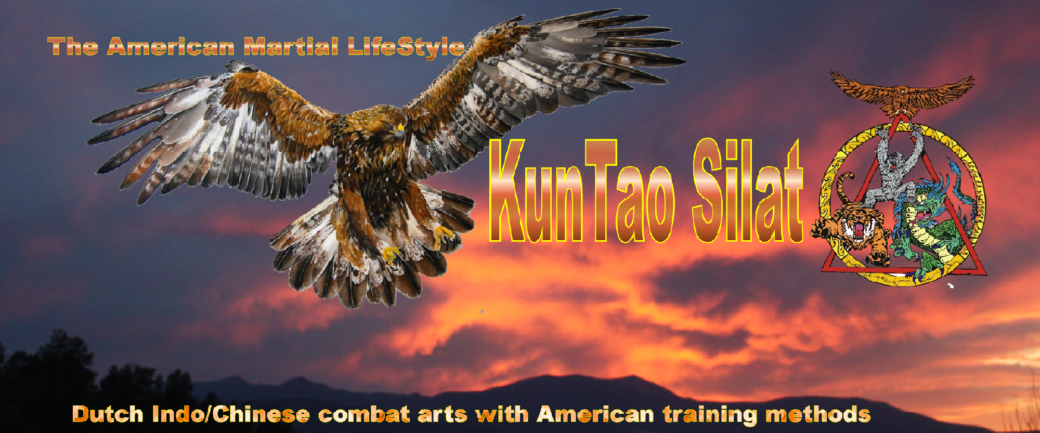Depending on long you have been in martial arts, or how wide your experience has been with the innumerable traditions available to us now in the 21st Century, you may or may not have noticed that some version of Horse Stance (aka Tiger Stance in Malabar) is found in virtually every system. Even “modern” combat sports like Jūdō (Jigo Hontai no Kamae) and Muay Thai (watch the Ram Muay pre-fight dance carefully) contain some variation of the Horse Stance. Horse Stance is a fundamental, major human posture. If you watch power lifters or kettlebell athletes performing a clean and press you’ll notice that their posture resembles Horse Stance.
In KunTao Silat, Horse Stance forms the core of the Malabar art, and it maintains an important central role alongside Sleeping Horse in the American system. American practitioners should not deceive themselves that their chosen branch of study does not require Horse Stance for full benefit and effect. Pak Steve has noted that Grandmaster Bill Chang performed many of his techniques from a lower Horse Stance. It was Pak Steve who modified the Chang Style by emphasizing the more upright Entering Stance to make the methods accessible to more people. While Sleeping Horse forms the technical and theoretical axis of American KunTao Silat, Horse Stance is still a crucial position to master. Therefore, despite its difficultly, Horse Stance is not exclusively an “External” martial arts practice. Those of you focusing on “Internal” skill also need to include it in your training regimen.
Different martial arts and their exponents hold different opinions as to the angling of the feet or the depth of the stance to be technically “correct.” Having spoken with Pak Steve about this, I will share his view (which has become mine).
“Classic” Horse Stance in many systems require all ten toes to be facing forward. Other teachers or systems insist upon a forty five degree angle (toes point to corners of a room). In KunTao Silat, we utilize both. Parallel feet do not allow for as deep or mobile a stance, but is excellent for developing stability, rooting, and power as well as being ideal for meditation. The forty five degree angle variation (which incidentally is the opposite hip/leg coil of Sleeping Horse Stance) allows for a deeper, wider posture, stretching open the hips and pelvis, and allowing for a dynamic shifting back and forth as well as transitioning into Advancing Tiger Stance, Dragon Stance, etc. If you look at videos of the various Gurus going back for decades you’ll find that when Horse Stance is utilized upon entry as a Breaking Table or a Displante, the toes out variation is usually preferred due to its natural mobility.
Put simply, practice both variations! They exist for a reason, and experience is the best teacher.
That being said, some key principles are necessary to reap the benefits of Horse Stance no matter your preferred variation, as well as prevent injury. The knees must ALWAYS align with the toes. There should never be any rolling in or out of the knees. Weight is kept over the Kidney 1 (Yongquan) acupoint just behind the ball of the foot in line with the gap between the second and third toes. Do not roll your ankles or feet onto the outer or inner edges. The tailbone must be gently tucked, the same as in Sleeping Horse (and all our other postures) to take pressure off of the lumbar spine, firm up the abdomen, and open the circulation of blood, lymph, and cerebral spinal fluid in the spinal canal.
As a meditation posture, Horse Stance takes the capacity to develop mental fortitude in the face of hardship to the next level. Concentration of the breath, guiding it down into the space below and behind the navel (the Lower Dan Tian or Sacral Chakra depending on your preferred tradition) will allow you to double your time in stance.
In my personal practice, I like to “Embrace the Tree” as seen in Yiquan and some schools of Tai Chi Chuan. Just like in Centering Exercise, stretch open all of the joints and connective tissues as you wrap your arms around an invisible tree or ball. Relax all of your muscles, allowing the tendons and fascia to hold the position of gentle extension. On every out breath consciously release your physical and mental discomfort alongside your carbon dioxide.
With regular practice you will be able to stand for longer periods. I accredit much of the speedy recovery I’ve experienced following my emergency appendectomy in July to this exercise.
Remember also to incorporate Horse Stance into your Daily Constant Practice. Use Horse Stance to pick things up. Take regular breaks from sitting in a chair to sit in Horse Stance. Lots of little practices are just as beneficial as a few longer sessions.
How long to aim for? There’s debate about this. If you are an American KunTao Silat player, 5-10 minutes is plenty. Malabar players should be able to do at least that much. Just make sure than your alignment is good and that your joints are not hurting.
Happy training,
Dr Jon
Discover more from KunTao Silat
Subscribe to get the latest posts sent to your email.

No comments yet.